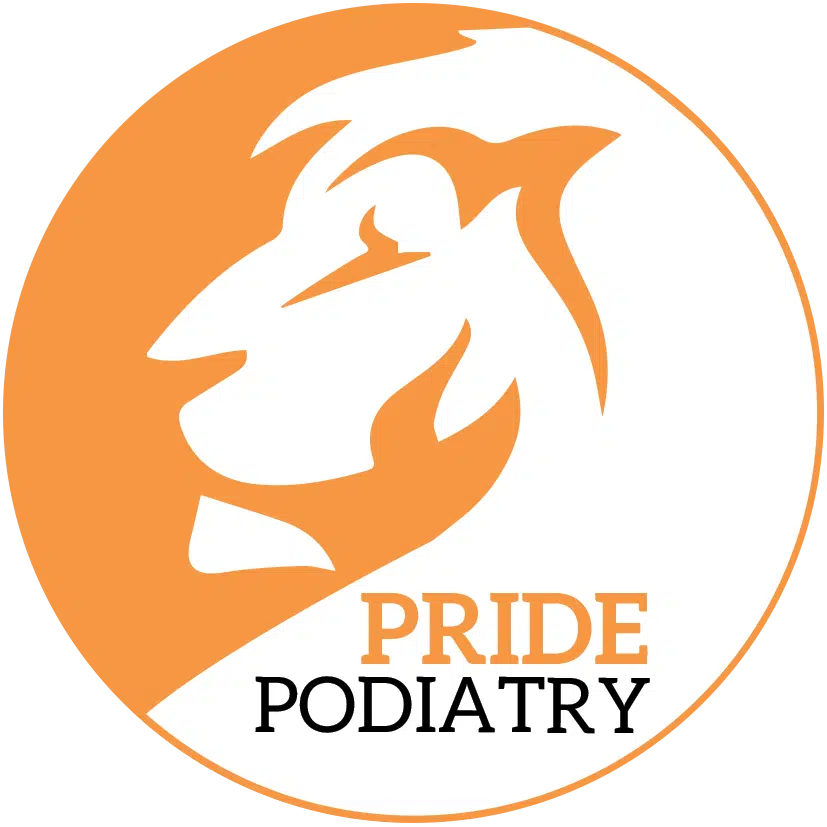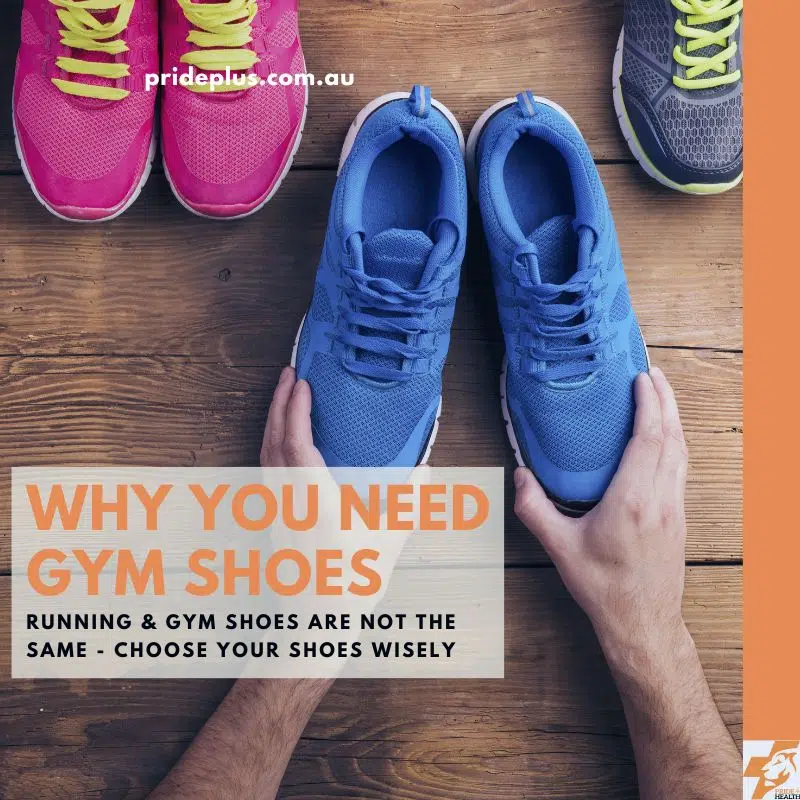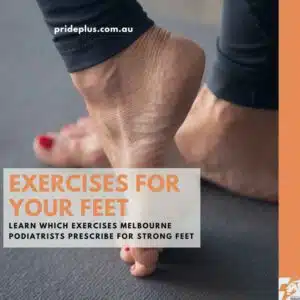If you think that running shoes and the gym shoes you wear to workout in are the same, you’d be wrong. But you certainly wouldn’t be the first person to think that.
A huge number of people wear their running and gym shoes interchangeably. However, doing so is actually detrimental to your feet and your body, and it can even lead to injury.
With an estimated 1 in 5 Australians waking up every day with foot pain, having the correct footwear for running and for working out is clearly very important.
In this article, we’ll discuss the differences between running shoes and gym shoes, what to look for in both options, and why you should choose sport-specific footwear for optimal performance.
The Differences Between Running Shoes and Gym Shoes
Running shoes and training shoes may look similar, but they actually have a number of different design elements that set them apart.
Running shoes are created for heel-to-toe running movements to support your feet during a specific set of motions. The higher heel drops in running shoes provide additional support and cushioning for runners who exercise on tracks and other runs.
Conversely, training or gym shoes are designed for multi-directional movements, including lateral or side-to-side movements. The soles of these shoes are flatter than those of running shoes, which makes them more flexible and allows for a broader range of movement. They also offer wider toe boxes which enable a wider range of motion during exercises like squats. These shoes are best used at the gym.
The Importance of Sport-Specific Footwear Support
It may be tempting to use the same pair of shoes for running and training. But there are many benefits to using sport-specific footwear to support your feet during specific workouts.
Choosing the right type of shoe can help to protect you against the injuries associated with your chosen form of exercise while reducing the impact of your steps and cushioning your feet from heavy landings.
Sport-specific shoes can go a long way in improving your performance by enabling rapid movement and direction changes during gym training sessions, for example.
What to Look for in a Running Shoe
The best type of running shoes for you will depend on your running stride, anatomy, performance goals, and individual preferences. It’s recommended that you find a running shoe retailer that can provide you with specialised guidance to help you find the perfect fit.
Here are a few key characteristics to look for in quality running shoes:
- Appropriate heel to toe drop. This measurement can vary from zero to low (1mm to 4mm) to mid drop (5mm to 8mm) to high drop (8mm and higher). The best height for you will depend on previous and current injuries, foot strike, comfort, distance, cadence, and the terrain on which you will be running most frequently.
- Proper heel cushioning. The thickness of the material under the mid-soles of your shoes can reduce impact shock on your heels and make for more comfortable runs. The amount of cushioning you choose will depend on your personal preference.
- Foot type-specific support. Are your feet wide, flat, narrow, or high arched? Choosing the right type of running shoe for your foot shape can improve your performance and levels of comfort.
- Correct sizing. Shoes that are too small can cause blisters and discomfort and damage your toes and toenails. There should ideally be around half thumb’s-width of space between your toes and the edge of your running shoe.
- Comfort. Every runner prioritises certain features in their shoes. Choose the options that feel most comfortable and lightweight for you.
The Support Required in a Gym Shoe
The right training shoes will enable free movement and provide both comfort and support. There are two options to choose from—sports-specific shoes and cross trainers for those who enjoy a wide range of training activities. This means that the shoes you wear for bodybuilding programs focusing on weightlifting may differ from those worn for indoor cycling. Or, you’ll need to pick a pair of cross-trainers that suit both activities adequately.
Look for these features when choosing your gym shoes:
- Flexible designs. Flexible training shoes will enable easy movement in various directions.
- Proper heel support. The best training shoes provide extra heel support through the use of plastic coverings near the heels and other unique features.
- Plenty of bend at the shoes’ toes. Training shoes should enable you to bend at the toes, allowing you to push off at the base of your toes.
- Low heel to toe drop. This reduces your risk of ankle sprains during lateral movements.
- Wide forefeet. Gym shoes need to be wider at the forefoot to enable lateral motion.
- Adequate cushioning. Your gym shoes should provide cushioning without being cumbersome or bulky, as this could cause you to land improperly and may put you at risk of training-related injuries.
- Sufficient traction. Shoes that provide enough sole traction will enable rapid and safe movements. Speak to an expert to find comfortable shoes that fit you well and provide all the features you need to train safely.
How to Find the Right Gym Shoes for Your Feet
Every part of your shoe is designed for a purpose, and it’s important to consider shoe anatomy when making your choice.
First, assess the upper part of your shoe, which should lay down smoothly wherever it touches your foot without bunching, chafing or constricting you. The ankle collar should also prevent your feet from slipping without chafing against your Achilles heel.
The heel counter, which is a cup layered inside the rear foot to support your heel, should allow for a comfortable ankle motion. The saddle of the shoe (around the instep) should hold your foot securely in place with no slippage or excessive tightness.
Assess the toe box too. The toe box should be wider for training and gym purposes and should allow your forefoot to flex naturally without rubbing against any of your toes.
Think about your running or training surface as well. Choose shoes that provide traction without adding stiffness or bulk, and provide the right level of underfoot stability for your needs. The mid-sole of your shoe, which is the foam between the upper and out-sole of the shoe, should feel right at your optimal training and running speeds and offer your desired level of firmness or softness.
The heel cushioning in your shoe should provide not only cushioning but stability, too. The shoe’s forefoot cushioning should also provide responsiveness and a firm pushing-off platform, especially for runners. Remember to consider the heel to toe drop of your shoe as well. Training shoes should have a low heel-toe drop, while running shoes’ drop can be chosen according to your anatomy and preferences.
Put Your Best Foot Forward
Running shoes and training shoes provide different levels of flexibility and support for specific activities. When you know the facts, it’s easy to see why the shoes you wear for running cannot fulfil the same purpose as those you wear for a workout. You wouldn’t wear loafers to work and to the beach, and the same principle applies to gym and running shoes!
Use this guide to choose the shoes that will support you and protect you against injury while boosting your performance on the track or at the gym.
Guides For Finding Your Best Shoes
Our podiatrists want you to find the shoes that will help you out the most. Check out the following running shoes guides for your best runners.




